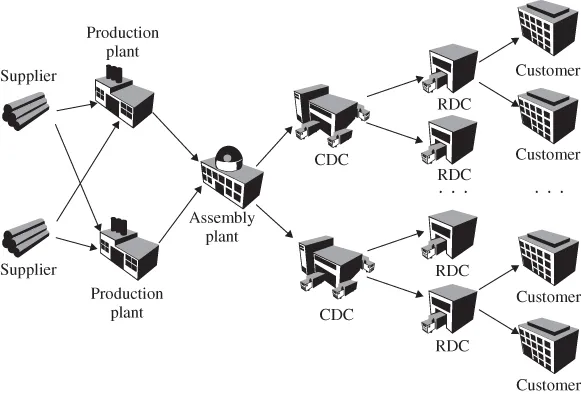
Introduction to Logistics Systems Management
- English
- ePUB (mobile friendly)
- Available on iOS & Android
Introduction to Logistics Systems Management
About this book
This textbook offers an introduction to the methodological aspects of logistics systems management and is based on the rich experience of the authors in teaching, research and industrial consulting.
This new edition puts more emphasis on the organizational context in which logistics systems operate and also covers several new models and techniques that have been developed over the past decade.
Each topic is illustrated by a numerical example so that the reader can check his or her understanding of each concept before moving on to the next one. At the end of each chapter, case studies taken from the scientific literature are presented to illustrate the use of quantitative methods for solving complex logistics decision problems. An exhaustive set of exercises is also featured at the end of each chapter.
The book targets an academic as well as a practitioner audience, and is appropriate for advanced undergraduate and graduate courses in logistics and supply chain management, and should also serve as a methodological reference for practitioners in consulting as well as in industry.
Frequently asked questions
- Essential is ideal for learners and professionals who enjoy exploring a wide range of subjects. Access the Essential Library with 800,000+ trusted titles and best-sellers across business, personal growth, and the humanities. Includes unlimited reading time and Standard Read Aloud voice.
- Complete: Perfect for advanced learners and researchers needing full, unrestricted access. Unlock 1.4M+ books across hundreds of subjects, including academic and specialized titles. The Complete Plan also includes advanced features like Premium Read Aloud and Research Assistant.
Please note we cannot support devices running on iOS 13 and Android 7 or earlier. Learn more about using the app.
Information
1
Introducing logistics
1.1 Definition of logistics
1.2 Logistics systems

Table of contents
- Cover
- Table of Contents
- Series
- Title
- Copyright
- Dedication
- Foreword
- Preface
- Acknowledgements
- About the Authors
- List of Abbreviations
- 1 Introducing logistics
- 2 Forecasting logistics requirements
- 3 Locating facilities in logistics systems
- 4 Selecting the suppliers
- 5 Managing a warehouse
- 6 Managing freight transport
- Index
- End User License Agreement